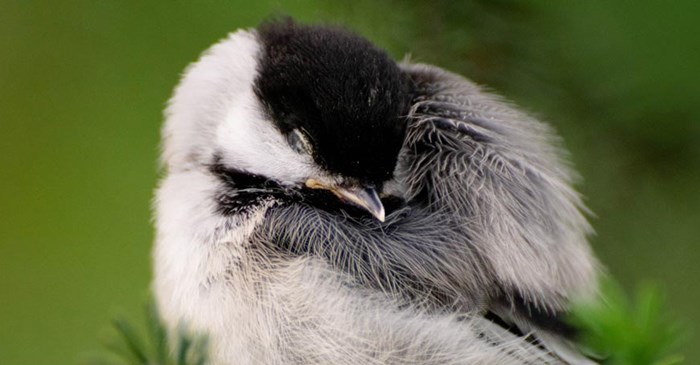Birds sleep in many different places, depending on the species, as well as the time of year.
In the winter, many cavity-nesting species, such as Chickadees, Nuthatches, and Titmice, sleep together in old woodpecker cavities, birdhouses or roosting boxes. However, during nesting season, the female usually sleeps on the nest, with her mate next to her or very close by.
Many open-nesters sleep much the same way during the nesting season, but there are exceptions, such as the male Red-winged blackbird, who sleeps alone during the breeding season. Open-nesters, such as Cardinals and Mourning doves, flock together at night in winter to sleep in a communal “roost”, usually in dense evergreens, thickets or shrubs.
Nesting vs. Roosting
There is quite a bit of confusion about the difference between sleeping and roosting. Roosting generally refers to communal birds that always remain together in large flocks, like Crows and Starlings, but it really is a term referring to a period of inactivity similar to sleeping. All birds sleep, but they have periods of “quiet sleep”, during which they peek at intervals, and “active sleep”, where their eyes remain closed.
How often they peek depends also on the time of year, and how many birds are flocking together. For instance, during breeding season, the male of a pair will peek more often, to check on not only the safety of his mate and their nest, but also to make sure there are no “extra-curricular” activities taking place - which explains why studies have shown that bachelor males peek less often during this period!
Ducks, who usually sleep in a row, are another story altogether: a recent study showed that the ducks at the end of the row sleep with one eye open all the time. Most nests are primarily used for the raising of young, and not used for sleeping after the breeding season is over by the bird that built it, but they can be used by other species, as already explained. However, some birds, House Sparrows especially, have been known to occupy their nests throughout the year.
